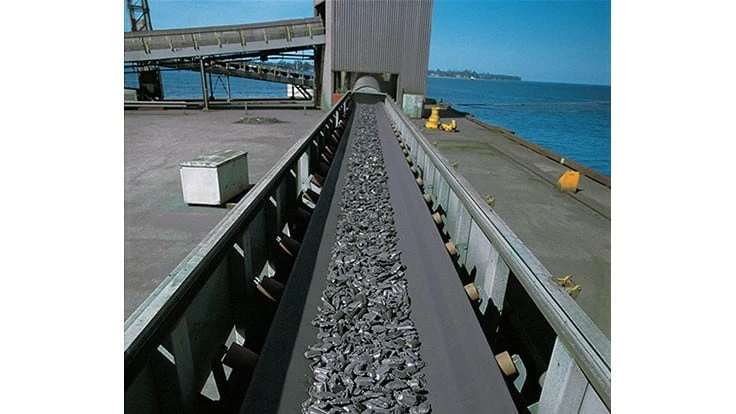
Photo provided by Midrex Technologies Inc.
An analysis by an Arlington, Virginia-based investment bank predicts that “a critical shift is under way” that will see electric arc furnace (EAF) steelmakers in the United States begin to seek out domestically sourced ore-based metallics (OBMs). OBMs include direct-reduced iron (DRI), hot briquetted iron (HBI) and merchant pig iron.
The 15-page analysis by B. Riley FBR Inc. sees increased demand for HBI and DRI in part because of new EAF melt shop capacity that is under construction and because of a potential scarcity of prime grades of ferrous scrap.
The report, co-authored by Lucas N. Pipes, Matthew Key and Daniel Day, states in its summary, “As scrap prices move higher and an increasing number of EAFs look to move up the value chain into higher value-add products, demand for OBMs is nearing an inflection point, in our view.”
OBM projects that could thus find takers for their output include the HBI facility under construction by Cleveland-Cliffs Inc. in Toledo, Ohio, and coking metallics produced by Illinois-based SunCoke Energy Inc.
EAF steelmaking is projected to grow thanks to several projects underway. New mills are planned or under construction by: Nucor Inc., in Kentucky; Steel Dynamics Inc., in Texas; U.S. Steel Corp., in Alabama; and Big River Steel, in Texas. (Big River Steel is now partially owned by U.S. Steel.)
EAF capacity expansions are underway or planned by: Nucor, in Kentucky; Big River Steel, in Arkansas; North Star BlueScope Steel, in Ohio; and JSW Steel, in both Ohio and Texas.
If all those projects come to fruition, they would require as much as 3.7 million tons of prime scrap, putting a supply strain on a scrap commodity the authors say is already “dramatically reduced” in available volume.
The analysts say shredded or other forms of obsolete scrap are unlikely to plug the gap. Even the highest grades of scrap available in the U.S. may have melt shop chemistry issues. “In the past, Nucor management has indicated that the copper content in the domestic prime scrap supply has risen by 300 percent since the company began tracking it in the early 1990s,” the B. Riley FBR authors state.
The presence of copper and other nonferrous metals in all but the most trace amounts is unwelcome in steel products considered higher value, such as flat-rolled steel used by auto makers. “EAFs are moving up the steel value chain,” states the report. “As high-quality scrap has become increasingly scarce and the volume of higher value-add steel produced by EAFs continues to rise, demand for prime scrap and OBMs is, we believe, set to inflect higher.”
Latest from Recycling Today
- BMW Group, Encory launch 'direct recycling’ of batteries
- Loom Carbon, RTI International partner to scale textile recycling technology
- Goodwill Industries of West Michigan, American Glass Mosaics partner to divert glass from landfill
- CARI forms federal advocacy partnership
- Monthly packaging papers shipments down in November
- STEEL Act aims to enhance trade enforcement to prevent dumping of steel in the US
- San Francisco schools introduce compostable lunch trays
- Aduro graduates from Shell GameChanger program





